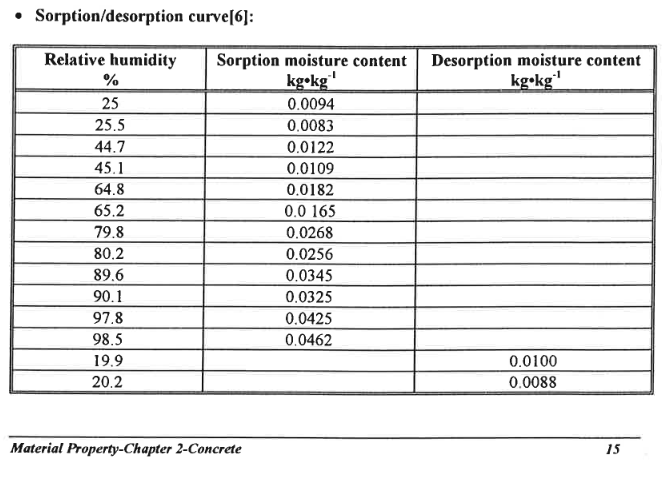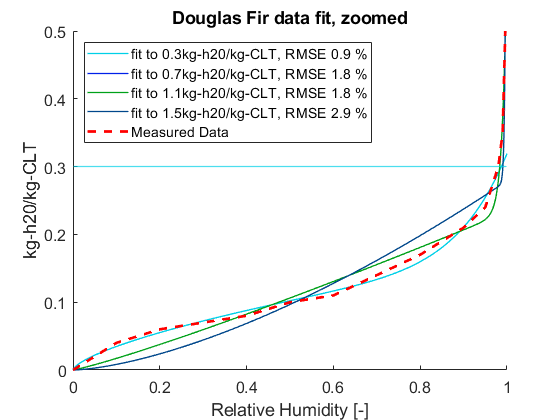Material Hygroscopic Properties - EMPD Moisture Transfer model
Hi all,
I'm working on the effect of varios materials on the humidity levels inside a room. Aside from the impact of their thermal conductivty and specifc heat, I'm looking into the hygroscopic properties of natural materials [adobe, compressed earth blocks] in comparison to concrete and bricks.
To account for the vapour absorption/release of the walls, I'm working with moisture transfer calculations between the walls and the indoor air in EnergyPlus, I'm using the EPMD model (MoisturePenetrationDepthConductionTransferFunction) and in order to assign the hygroscopic properties to the materials, the MaterialProperty:MoisturePenetrationDepth:Settings object.
MaterialProperty:MoisturePenetrationDepth:Settings,
Gypsum, !- Name
6, !- Water Vapor Diffusion Resistance Factor {dimensionless}
0.0068, !- Moisture Equation Coefficient a {dimensionless}
0.939, !- Moisture Equation Coefficient b {dimensionless}
0.0202, !- Moisture Equation Coefficient c {dimensionless}
12.2, !- Moisture Equation Coefficient d {dimensionless}
0.019, !- Surface Layer Penetration Depth {m}
0.073, !- Deep Layer Penetration Depth {m}
0, !- Coating Layer Thickness {m}
0; !- Coating Layer Water Vapor Diffusion Resistance Factor {dimensionless}*Unfortunately, beyond the material properties specified in the MoistureMaterials.idf dataset that comes with EnergyPlus, I'm finding it very difficult to find the required properties for any other material (in my case earth-based constructions).
Does someone around here know any reliable material database where to find the hygroscopic properties of materials? If it contains earth-based construction would be fantastic! Unfortunately, I'm not an expert on physical properties and some of the terms are a bit abstract.
So far, the most complete databases I've found are below. However, there is no mention to earth-based constructions, and the terms they provide for Hygric properties do not seem to find with the inputs required in E+.
http://www.iea-ebc.org/Data/publicati...
http://www.iea-ebc.org/Data/publicati...
Many thanks!
Rafael







